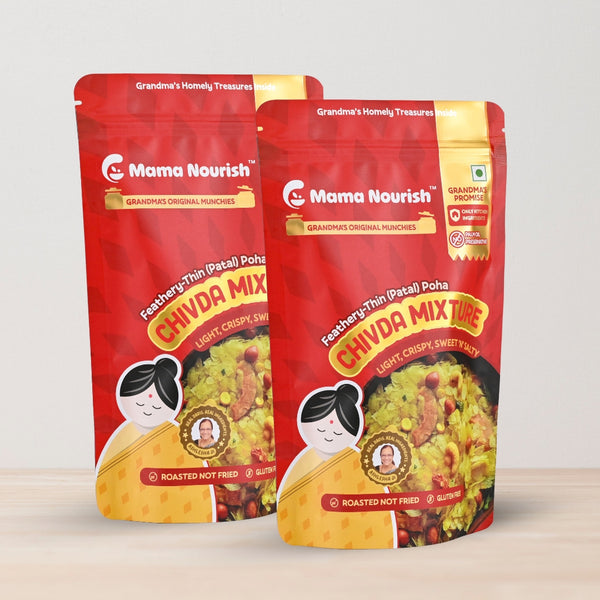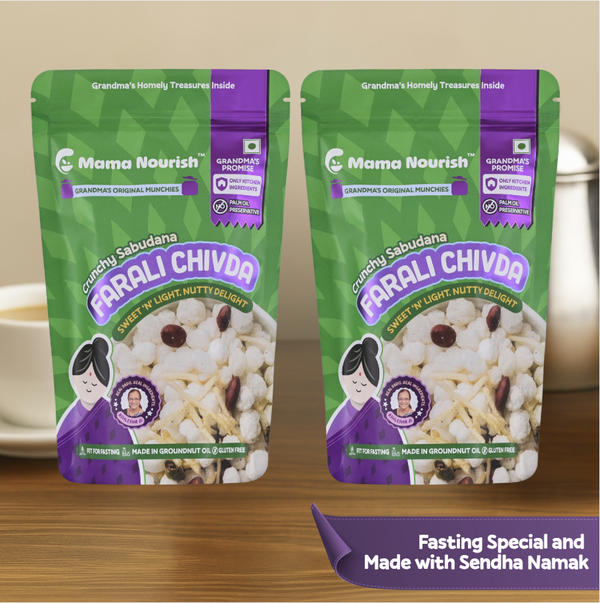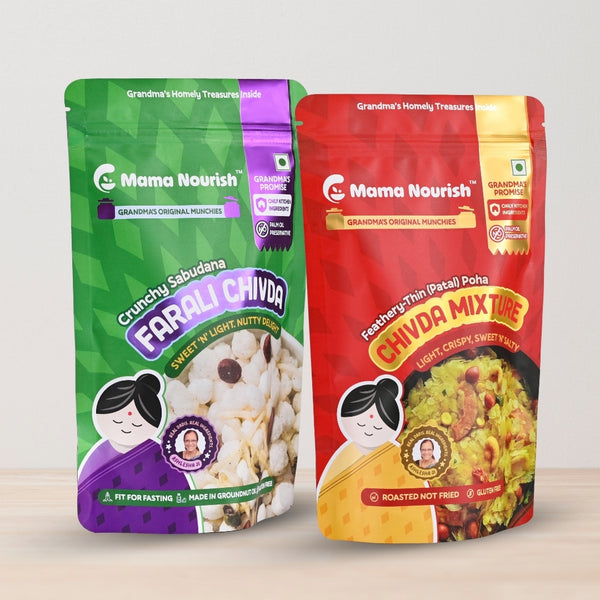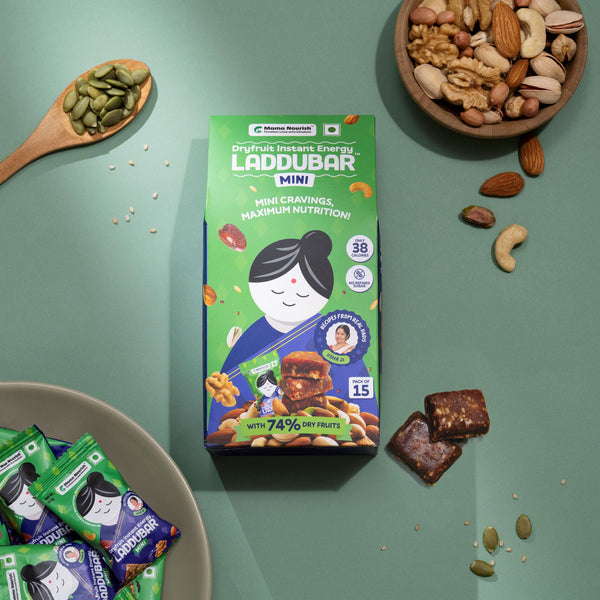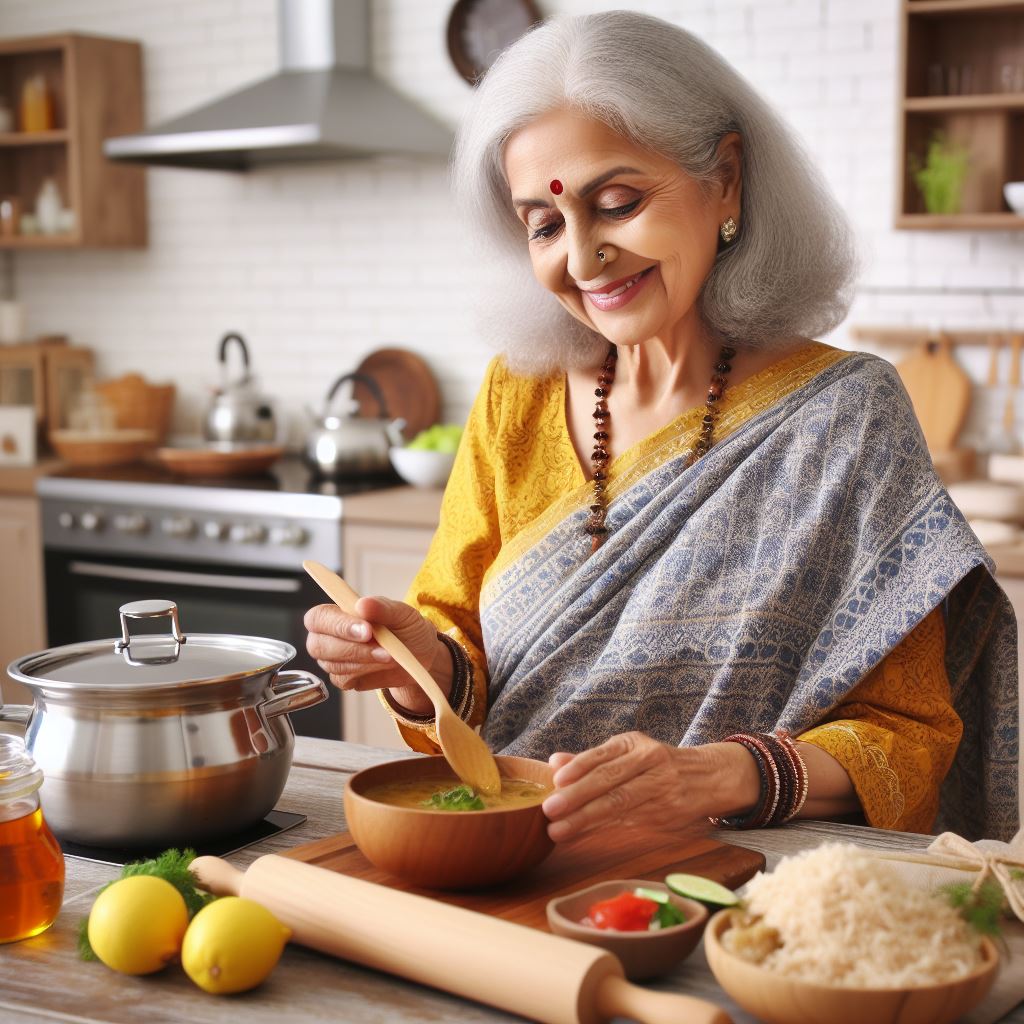
Science Behind Grandma's Wisdom
We all grew up listening to strict dietary advice from our grandmas. How many times have you heard your grandmothers saying- don't eat milk with yoghurt, or to eat more sprouts? Not only that, whether it's a stomach ache or cold, Grandma always had her hacks to deal with it.
Well, our grandmothers always give advice about how to cook, what to eat, what not to eat, which spices to pick for making your favourite traditional recipe, etc. Whether about cooking techniques or home remedies for ailments, we always found grandma's advice effective.
Isn't it amazing that Grandma’s hacks always work? Have you ever thought about the science behind Grandma's wisdom?
Let's take a sneak peek into such age-old pearls of wisdom and science behind it!
1. Some Food Habits From Grandma's Kitchen And Science Behind it!
1.1. Tempering

Tempering is the soul of Indian cooking. But did you ever wonder why our elders emphasised so much on tempering? Here is the Science behind it-
- The purpose of tempering is twofold: first, to make dishes flavourful and second, to add nutrient and medicinal values to the dish.
- Tempering is a must for the traditional cuisine of India and is usually done by heating or roasting species in heated oil or ghee. Ingredients typically used in tempering include cumin seeds, fennel seeds, fresh green chillies, mustard seeds, dried red chilis, ajwan, cloves, fenugreek seeds, etc.
- There are generally two types of food ingredients: fat-soluble and insoluble. The spices used for tempering are fat-soluble ones. Hence, the taste and aroma remain with the dish.
- In fact, your nourishing journey begins when the appetising aroma of spices reaches your nose.
- The best part is that tempering is not just about adding aroma and flavours; rather, the species used, like cumin seeds, fenugreek seeds, cloves, etc, are packed with nutrients.
- Cumin seed is a must for tempering for numerous dishes.
- Roasting cumin seeds enhances flavour and aroma, making them more appetising and stimulating for digestion.
- Roasting also activates beneficial compounds in cumin, such as cumin aldehyde, which has anti-inflammatory and antimicrobial properties.
- Similarly, the cloves used while tempering are a rich source of manganese and vitamins and contain antioxidants like eugenol.
1.2. Soaking

Soaking almonds, walnuts, pistachios, cashews, fenugreek and raisins before adding them to recipes like Dadi maa's laddu is a commonly recommended practice by our Grandmothers. Here is the science behind it-
- Soaking almonds overnight may make them easier to peel and chew, as well as improve texture and taste, but do you know soaking actually helps to remove some of the antinutrients in almonds, such as phytic acid and enzyme inhibitors, which impair the digestion and absorption of nutrients like calcium, magnesium, and zinc.
- Soaking also activates beneficial enzymes like lipase in the case of almonds, which help to break down fats and release energy.
- Soaking fenugreek seeds makes them softer and easier to digest, as well as reduces their bitterness.
- Soaking helps to leach out antinutrients in fenugreek, such as phytic acid and tannins, which otherwise are known to interfere with the absorption of minerals like iron, zinc, and calcium.
- Soaking increases the bioavailability of beneficial compounds in fenugreek, such as galactomannan, a soluble fibre that lowers blood sugar and cholesterol levels, and diosgenin. This phytoestrogen is known to balance hormones and improve reproductive health.
1.3. Sprouting

Sprouting is another technique generally recommended by grandmothers at home; why go for sprouting?
- The sprouting is the process of germinating seeds or sprouts.
- For sprouting at home, the seeds are generally soaked at room temperature in a bowl.
- During the sprouting process, by adding water, the metabolic activity of seeds increases. The enzymes act on complex chemical compounds like protein, starch and lipids, leading to their disintegration into simpler compounds that are further used to produce new compounds.
- These increased metabolic activities make sprouts powerhouses of vitamins, minerals, proteins, and amino acids.
- These nutrients are quintessential for plant growth and germination. Hence, sprouts are rich in such nutrients, which also benefits humans.
- In addition to the enhanced nutrient supply, the sprouts are easy to digest. However, it is advisable to eat sprouts after cooking since raw sprouts contain harmful bacteria.
1.4. Roasting
The logic behind roasting wheat flour-

- Roasting wheat flour has been a practice whenever grandma's recipes kickstart, giving it a nutty flavour and a darker colour, increasing its shelf life and preventing insect infestation.
- Roasting reduces the moisture content and the gluten content of wheat flour, which can make it more suitable for people with gluten sensitivity or intolerance.
- Wheat generally has a low glycemic index of 54.
- Roasting also increases the antioxidant activity and the availability of some of the nutrients in wheat flour, such as vitamin E, phosphorus, and iron. Some other similar practices are roasting gram flour (besan), rice flour, ragi flour, and oats before making rotis, dosas, or porridge.
1.5. Specific Dietary Advice: Add Moong Lentil to Your Diet

Why Moong lentil when recovering out of ailment or even during postpartum recovery? Here is the science behind it-
- Moong lentil is one of the easiest and lightest to digest proteins known to us.
- You will hear experienced mothers and grandmothers recommend staying away from chickpeas, peas and beans very early after delivery as it causes bloating for the new mother.
- From the table below, it is clear that moong lentils offer higher protein content, but digestion time is lower compared to other food items, making it an ideal protein source.
- Besides moong lentils, you can also try snacks like Postpartum recovery laddu prepared based on traditional recipes to remain healthy during the postpartum period.
|
Food Item |
Protein per 100g |
Digestion Time |
|
Cow Milk |
3.22g |
2-3 Hours |
|
Moong Lentil |
24g |
40-50 Minutes |
|
Beans |
21-25% of weight |
2-3 Hours |
|
Tofu |
8-14g |
6-8 Hours |
|
Peas |
5.4g |
2-3 Hours |
|
Hung curd |
10-12g |
4-8 Hours |
1.6. Incompatible Foods

Sometimes our grandmothers say stuff like don't eat milk with yoghurt or not to cook honey. Here is the science behind such an Incompatible diet or Viruddha Ahara
- Milk and yoghurt
- If both are consumed simultaneously, it leads to precipitation of milk in the stomach, hence leading to vomiting.
- Never heat Honey
- Honey is nutrient-packed when it is in its natural state. If you cook it or heat it loses its health benefits and does more harm than good.
- Cooking honey up to 37°C results in the loss of many nutrient components, which also have antibacterial properties.
- Heating up to 40°C destroys a vital enzyme called invertase.
- Further heating up to 50°C (122 F) for more than 48 hrs converts the honey into caramel, which is similar to sugar.
- Heating honey higher than 140 degrees F for more than 2 hours will accelerate degradation in quality.
- Heating honey higher than 160 degrees for any time period will lead to degradation and caramelisation.
- Pomegranate juice and grape juice
- These two fruits block cytochrome P450 3A4 enzymes and increase blood levels. Hence, it is not advisable to take them simultaneously.
- Some other incompatible diets include milk and fish, honey and ghee in equal proportion, cold food in winter, milk and banana, cold water right after having hot tea, etc.
- In today's food-conscious world, Many such combinations are now an area of academic interest
1.7. Fermentation of Dosa/Idli Batter

The science behind grandma’s advice on Fermentation of Dosa/Idli Batter-
- Dosa and Idli are undoubtedly two of the most popular Indian traditional food. Fermentation is used during the preparation of both recipes.
- Fermentation refers to the process of breaking down carbohydrates to alcohol and carbon dioxide facilitated by microorganisms under anaerobic or oxygen-free conditions.
- Carbon dioxide produced during fermentation causes the dosa or idli batter to rise and become fluffy and also adds flavour and taste.
- Yeast is added to the dosa/ idli batter to produce carbon dioxide. Generally, the batter is kept overnight to ferment.
- The yeast contains enzymes like zymase. These enzymes can break down carbohydrates and release ethanol and carbon dioxide, adding volumes to the batter and ensuring the required texture and taste.
2. Amazing Riddle?
We explored some of the advice given by our grandmothers and the science behind it. Practices like tempering, soaking, sprouting, etc., also have roots in our healing tradition of Ayurveda. Many of such practices are currently proven by various studies, and the rest are widely studied.
But Is it not amazing to think that our grandmother's advice is actually scientifically backed?
Have you ever wondered how our grannies came up with such solid advice? Well, let us know your thoughts in the comment section.
Share

